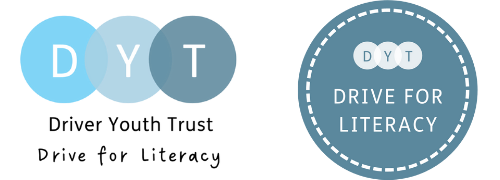
Supporting literacy difficulties: when is the right time for intervention?
18/2/2022
When is the right time to for classroom or structured intervention when you have a learner with literacy difficulties? The short answer to this, for a class teacher, would be as soon as you notice a problem but that can be easier said than done.
If a learner is struggling with literacy in your class, you might refer your learner to the SENCo. The SENCo will often refer you to the graduated approach, suggesting you try high quality teaching strategies first, keep a record, and if they continue to struggle they will observe the learner or conduct an in-house assessment.
This relies on you, as the class teacher, having the strategies or even the resources to try. But what the resources you have are limited or inappropriate for your learner’s needs? Giving a learner with comprehension difficulties a sheet of buff coloured paper alone is never going to work.
Knowing your learners
You need to get a better understanding of the learner’s literacy difficulties before you can intervene. Using a framework such as the Simple View of Reading, the Scarborough Reading Rope or the Sedita Writing Rope will help you breakdown the area of need in more detail and help you collate resources or scaffold to support their learning.
Next, it’s important to get the learner’s perspective on their literacy ability. Do they like to read? Are they frustrated with their written ability in comparison to their spoken ability? Do they know what they would like to say, but have trouble getting it on paper?
At this stage, the evidence gathering can be done in class and changes can be made straight away. There is no need to wait for diagnosis or for the referral to the SEND department to be acted upon. If the learner in your class is struggling to achieve potential then the right time to intervene remains when you become aware of the problem.
Classroom intervention vs. structured interventions
You might, however, be hesitant in applying an intervention when your school has a policy on interventions or a process which you need to follow. I would argue that a learner’s literacy will get worse from their teacher understanding their ability in more depth, and even better, addressing some difficulty with high quality teaching.
Examples of classroom interventions are pre-teaching key words before the start of a new topic, scaffolding spellings by increasing the opportunity to practice the words, hearing learners read aloud to assess fluency, and ‘echo reading’ modelling correct intonation and pace.
If classroom interventions don’t have the impact you’re hoping for, it’s time to implement structured interventions. These work best when:
- They address a specific need, such as phonics or handwriting
- Spelling high frequency words or working on specific spelling patterns, such as ‘ed’ endings or double consonants
- They are systematic and cumulative with clear entry and exit criteria
- They can be attended for short periods of time but frequently – being mindful of what learning is being missed as a result
When to refer your learner for more support
So, you’ve done your classroom assessment and you’ve tried a few strategies but your learner continues to struggle. What do you do next?
This is where the SENCo can make a referral, using the wealth of evidence and insight you collected before to support it.
Approaching literacy difficulties in this way means more learners will receive the support they need to hopefully reduce the gap in their literacy skills, and move on alongside their classmates. It means that those few that don’t can become the focus of the SENCo’s attention rather than the many.
The trick is focusing on and addressing the literacy profile of learners rather than looking for a specific learning difficulty and waiting for the answers from a structured intervention or diagnostic assessment.
Not sure where to start? We have over fifty free teaching resources on supporting literacy difficulties, teaching reading, writing and communication more inclusively, and adapting your lesson planning, delivery and learning environment to reach every learner. Head to our resources hub to get stuck in.

Kelly Challis, Head of Innovation & Learning
Inspired by working at a special school, Kelly completed a specialist qualification in teaching learners with literacy difficulties. Since then, she has worked in Primary and Secondary mainstream as a teaching assistant, Further Education as a manager, and Higher Education as a specialist one-to-one teacher. She has been a SENDCo in two preparatory schools.
